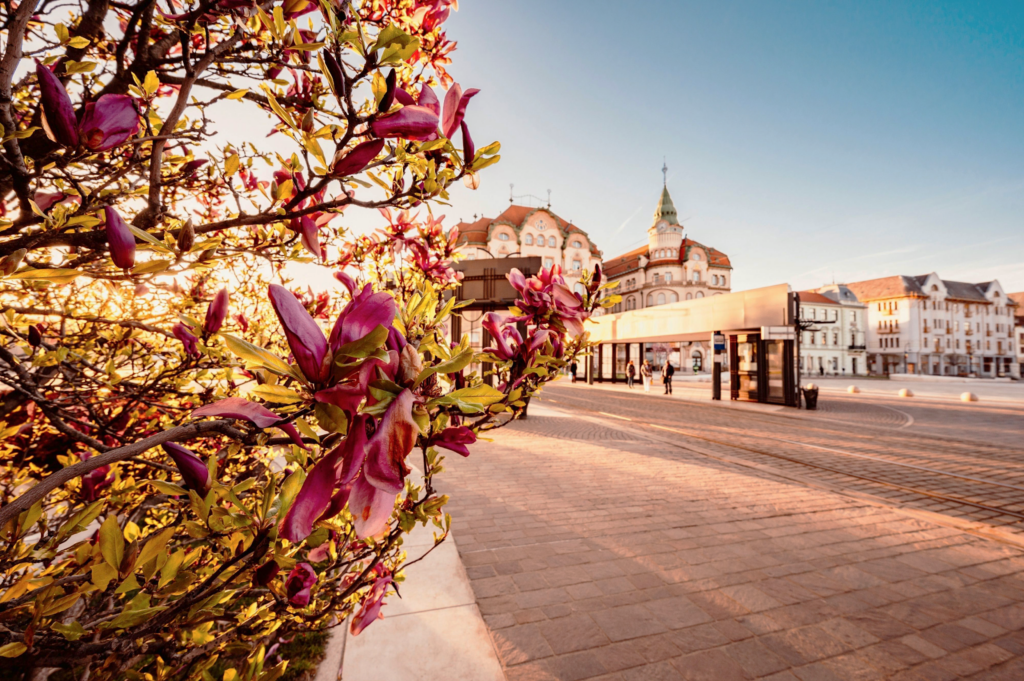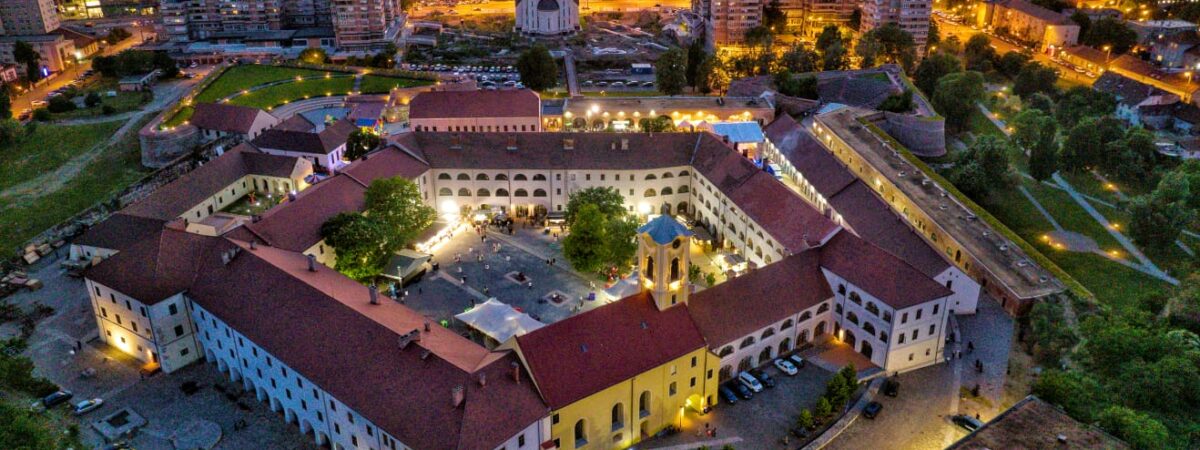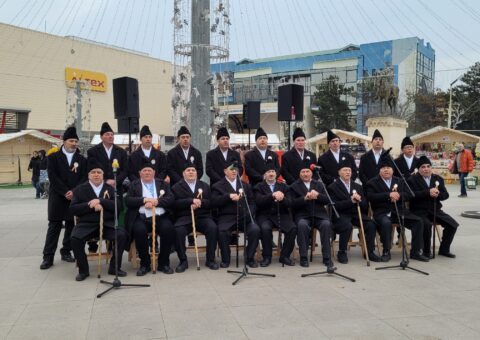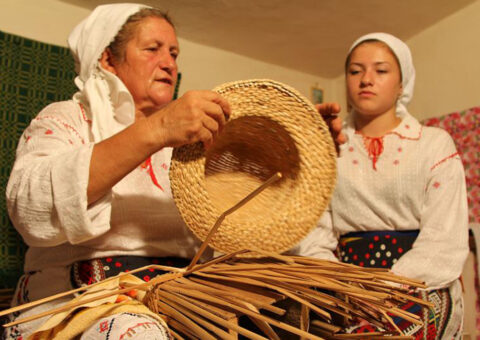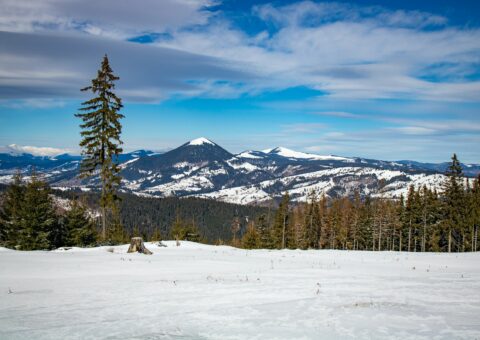Since ancient times, Oradea, in northwestern Romania, has always been a crossroads for travellers. Today, visitors can expect to find a mixture of cultures and traditions as they wander its sprawling streets. Local expert Ioana Lucaciu points out her favourite features.
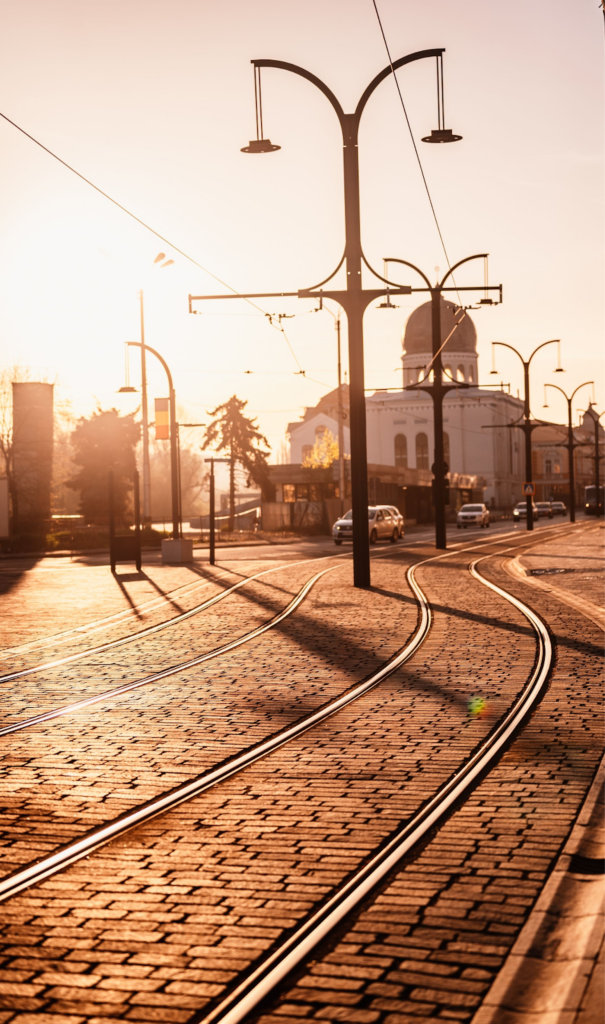
Upon Arrival
After a visitor arrives in my city, I always recommend going straight to the Central Square (Piața Unirii) and the pedestrian street, Pietonala, (or Republicii Street, its official name), because this is where you can get the real local vibe, admire the city’s architectural jewels, and get tourist information from the tourist office located beside the theatre.
The best time to be here is spring (March-May) or autumn (September-November). During springtime, the city blossoms with renewed energy and different flower and tree species, which you can admire when walking along the Criș River, in the central area. In autumn, you can see, taste, and smell the fruits of summer during the Oradea Autumn Festival, which usually takes place between mid-September and mid-October, culminating with the City Day celebration on October 12.
I tell first-time travellers to visit the Baroque Complex. It is close to the railway station (about a 15-minute walk from the centre). It comprises the 1777 Palace of the Roman-Catholic Diocese of Oradea, the Church, and the Canons’ Row, one of the largest Baroque-style complexes in Southeast Europe. I also tell them to avoid walking along the main boulevards or streets, because of traffic.
The best museum to start your journey and get a good sense of this city is Oradea City Museum, which is located in the fortress, because it reveals the complex history of Oradea. You can follow its timeline while strolling through some of the oldest galleries in the fortress, but also find out more about the city during communist times or the modern age. The museum has dedicated space to all the four main religions that have always coexisted in Oradea: Catholic, Orthodox, Protestant, and Jewish.
Parents should take their kids to Nymphaea Aquapark, one of the largest in Eastern Europe, because there is only one pool with natural thermal water, which makes it a perfect place for leisure with no restrictions. Oradea Fortress is also interesting for children, especially during a festival held here in the summer. A visit to Cair Paravel bookstore will also enchant the young ones.
Food from the Heart
Among the food (or dishes) my city is most proud of, plăcinta (a sort of pie fried in a pan, with filling) is an absolute must. I like to go to Plăcintăria Zena or Plăcintescu to really enjoy it. You will also find many places where some ladies make pies, as they are very popular in Oradea. The most traditional are the ones filled with potatoes, cabbage, or a mixture of cheese and dill.
When we get together to celebrate, beer or shots is what people here traditionally drink. Several types of craft beer have appeared in the last few years, and we even have a local brand called Bers Nova. I like to gather my friends and go to one of the pubs in the Black Eagle Passage (usually Lord’s Pub) for a round. This is the heart of Oradea nightlife, along with Moszkva, which has a more alternative feel.
When I eat completely local, I will go to Rosecas restaurant. I know the food here is carefully prepared using quality ingredients and it is absolutely delicious. The vegan Cris restaurant, close to the fortress, is also a great option for me whenever I don’t feel like eating meat and I want to enjoy a healthy meal. For a snack, however, I will stop by the local Dorbob bakery, which has amazing treats and drinks.
Another two classic, iconic restaurants include To Chefs (close to the City Hall) and Spoon, with its terrace overlooking the river. Via29 is another great option for a deliciously cooked, mostly Italian menu (which is very appreciated in Oradea).
The part of town where locals come for traditional food is the Main Street (the pedestrian street), which is also the main target when it comes to the architectural side of Oradea. This street reveals the local atmosphere very well, especially during summer. Here you can enjoy the sight of some of the most beautiful early 20th-century palaces of Oradea and have lunch or a snack, good coffee, and the best ice cream in the city.
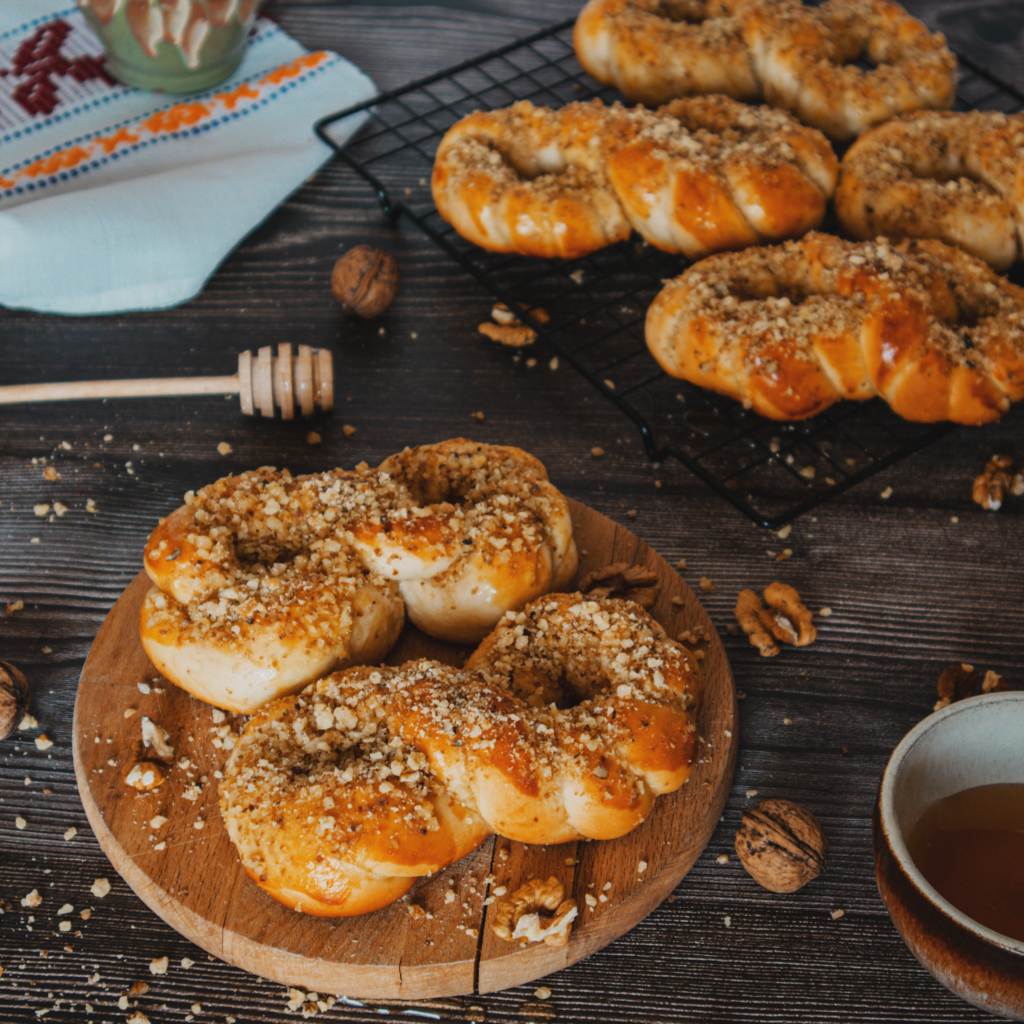
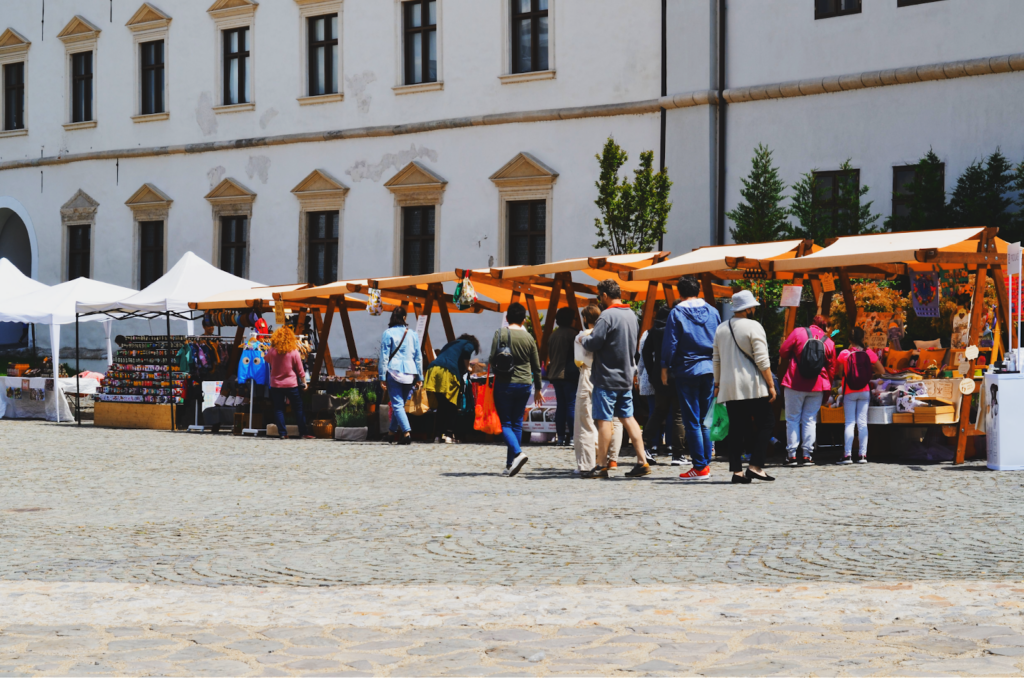
Shopping Locally
My city is known for making shoes and clothes, in addition to its multicultural and architectural fame. Since the 1920s, a successful shoe factory functioned in Oradea. There were also important textile and fur factories. Those interested can still find quality shoes at very good prices at one of the outlet stores of Leofex or Clasicor companies. As for clothing or leather products, there are several private designer stores on the Main Street and the Art Gallery.
The best outdoor food market in Oradea is Piața Rogerius, which has been recently modernised and is no longer in the open air. In Oradea there are three such markets where locals from the neighbouring villages and from the county come to sell their products (mostly fruit and vegetables); they are open every day.
And the best outdoor market to buy everyday items like tools, clothes, used cars, old furniture, and anything you might fancy is the Flea Market (also known locally as Ocska, the Hungarian name) or Piața 100, which is held on Saturdays and Sundays until 4:00 p.m. It is located close to the cemetery, but any local can direct you to it.
I always take visitors to museum shops to buy real local souvenirs. The products are guaranteed, usually hand made by local artisans, and the vibe is typical. They also offer specific products, depending on what the museum is about. And we know to avoid fake souvenirs because we rely on the choices made by the museum staff. The two museum-synagogues should also not be avoided, as they are very special.
Getting Deeper into Oradea
A great book to learn more about my city is “Oradea,” an album first edited by Muzeul Țării Crișurilor în 2001. It includes historical information about the city and its highlights.
Most people know about the historical centre, the Fortress of Oradea, and the Baroque Palace, but the Criș Country Museum (Muzeul Țării Crișurilor) should also be visited because there you can find out more about Bihor County, the wider region in which Oradea has developed. As the centre of the Roman-Catholic Bishopric as early as the 11th century, Oradea became the place where the Romanians from the villages of Bihor would bring their taxes, which were due to the Hungarian Emperor.
My city is a place people are attracted to because of its art nouveau/secession architecture, which has been particularly enhanced during the last several years. Most of the emblematic buildings of Oradea — built with the help of architects from the Austro-Hungarian Empire — have been renovated in recent years and some are even included in local tourism programmes, although they are private homes. Start your city tour at the Black Eagle Palace, the most renowned of the local heritage buildings. Its stained-glass, Y-shaped passage is said to be inspired by Galleria Vittorio Emanuele in Milan.
To really celebrate my city at its best, come during the Oradea Autumn Festival (recently renamed FestiFall) because the City Centre is beautifully arranged for the occasion and you can attend a variety of events (including open-air concerts), as well as discover some of the hidden treasures of the city.
Most people think of my city as a place to visit quickly and focus on its central part, but really this is a destination to explore in more depth, as it offers much more than just architectural wonders from different ages.
This is one of the best places in the world to experience the blending history of seven ethnicities, four religions, and the resulting cultures. Before getting city status, Oradea was settled by northern Thracian tribes, then Romanians, and then a Hungarian period, an Italian period, and other influences that shaped its multicultural identity. Locals are proud of that because the current city and its inhabitants are the result of this blend, the local spirit being one of acceptance and openness.
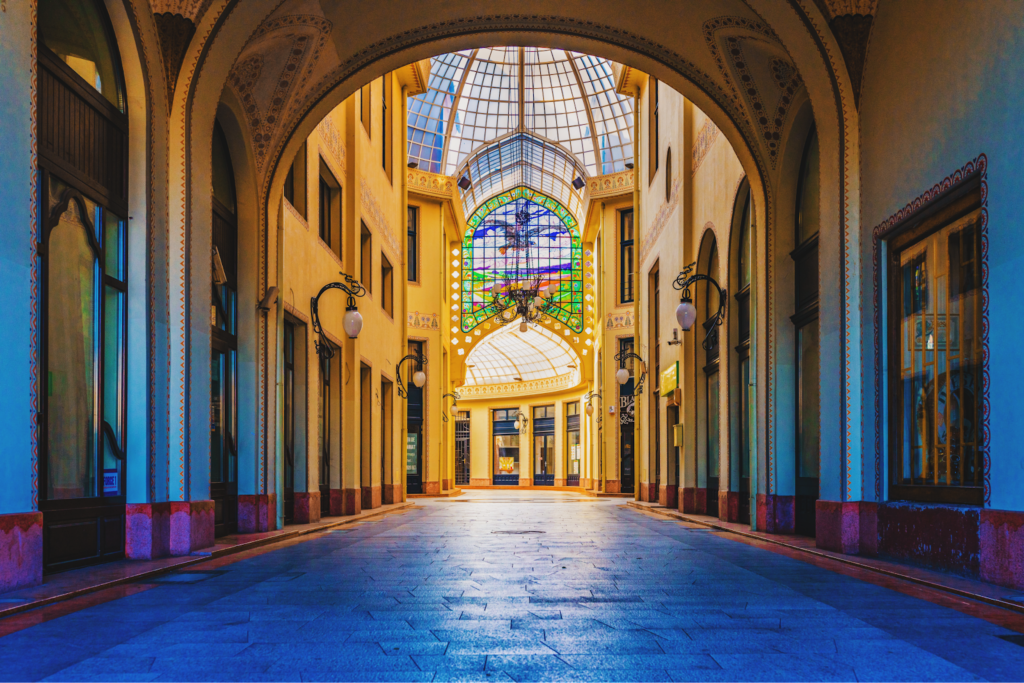
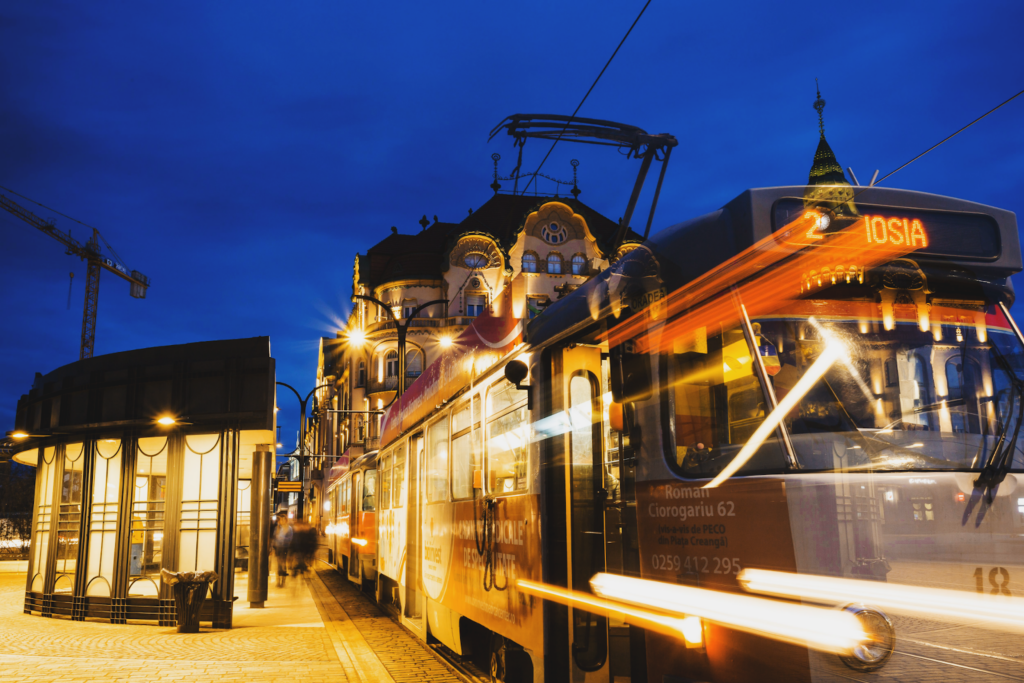
Getting Around Oradea
One thing you should know about getting around my city is that Oradea has a tram network, so it really is a pleasure to get around the city. As the city has expanded in the last 50 years, I do not recommend crossing it by foot. Most tourist spots, however, as well as the attractions, are close to the city centre.
The best way to travel in my city to have as little impact as possible is by foot or by bike, especially if you want to stick to the central area. Oradea also has an iVelo bike rental facility at Parcul 1 Decembrie (open from April to October) and almost 40 km of bike routes marked within the city area (some of which are along the Peța brook). Today many locals own a bike, and this means of transport is gaining more and more popularity locally.
Luckily this method of transportation also allows me to avoid traffic, keep myself fit, and save time and money.
Outside the City
To get away and into the outdoors, I like to jump on bus 13 or my bike and get up on the hill, to walk through Săldăbagiu Forest, partly protected as a Natura 2000 site. Being here is great, especially during spring, when you can have a taste of the Allium ursinum (wild garlic) leaves that fill the forest with a beautiful green carpet and listen to a fabulous, springtime bird concert.
For a day trip beyond my city, I like to visit Baile Felix and 1 Mai, traditionally known for their spas that rely on a large underground thermal water deposit. You can easily reach Felix or the 1 Mai area by bus (it is only 8-10 km distance from Oradea) and then walk to the village of Betfia, where you can spend some quiet time in the open air and then get a bus back to Oradea. Betfia hill is a nature reserve, known for its fossils, and has a vertical cave (not open for visits) and some rock climbing routes.
Many people will head to Felix first, but locals know to go to 1 Mai, as a nice hiking route starts there, crossing a beautiful forest and reaching Betfia hill directly. In addition, Betfia has two horse riding facilities that I recommend.
I really enjoy the view of my city from Ciuperca Hill, about a 20-minute walk from the centre. You can have a break from the city and enjoy a natural setting and a city panorama. A simple restaurant is located on top of this hill, with a basic menu.
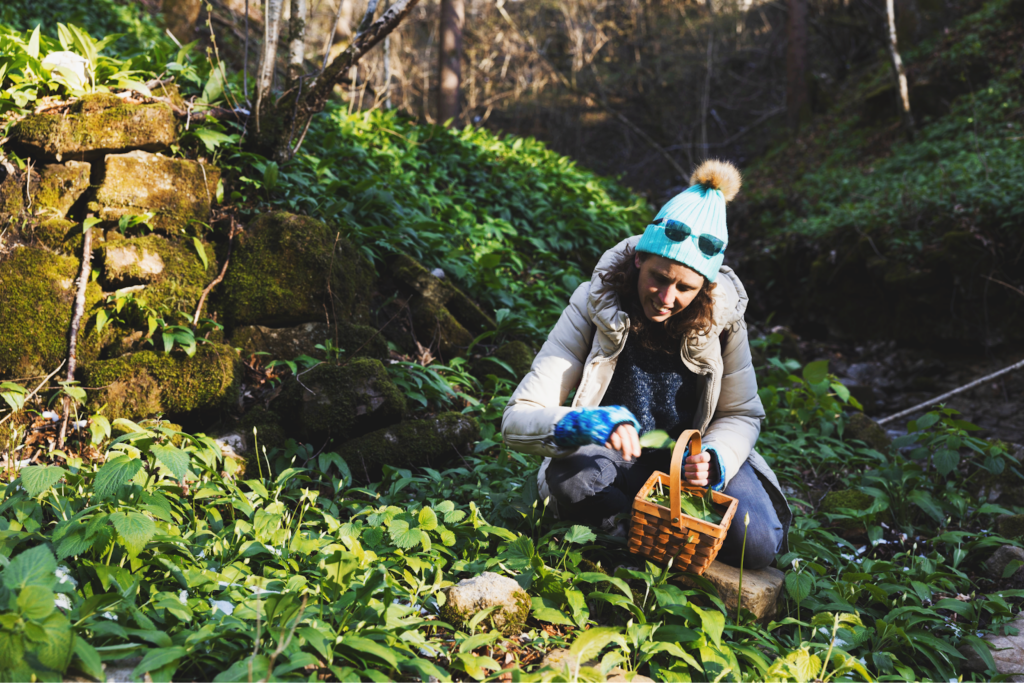
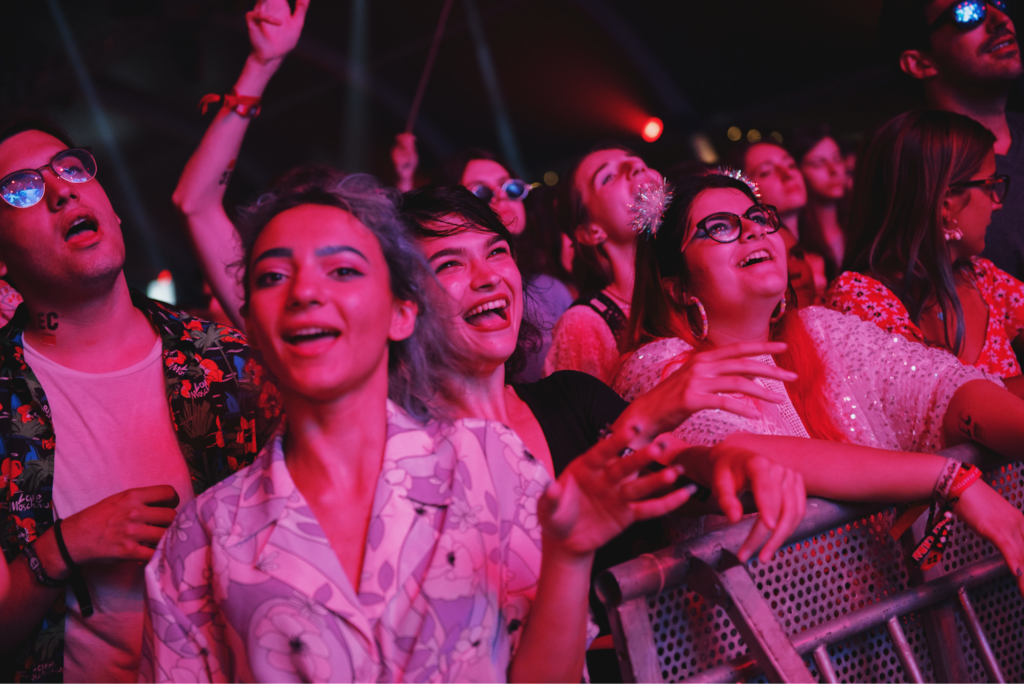
Connecting with Locals
When I want to have fun and celebrate being out in my city, I usually take a walk along the pedestrian street and stop at one of the terraces for a drink or some ice cream.
To hang out with my friends and go to a real insider spot, I go to Moszkva, where I enjoy alternative music. I prefer to go there for an event, such as one of its fairs with local, hand-made products, or a concert. You can meet new people, dance, and have fun.
The best resource for finding out what’s going on around town is the official Visit Oradea page or Evenimente Oradea. There are usually also events on Facebook for most local happenings.
When I want to enjoy my city without spending much (or any) money, I just take a walk along the Quick Criș River. I also like to sit inside one of the impressive churches in the city centre: the Catholic St. Ladislas Church, the Orthodox Moon Church, or the Greek-Catholic St. Nicholas Church. The small and quiet church near Ady Endre High School, on the pedestrian street, used to be part of the Ursuline Monastery and is also one of my favourite places in the city.
The Philharmonic of Oradea is my first choice for music because they have classical music concerts every week, but also organise special concerts and events during the year, featuring local and international singers and composers. I also like to hear concerts in the Sion Synagogue or the Baroque church. And when I feel like dancing, I go to the Black Eagle Passage pubs or Moszkva for the atmosphere and music.

Finding Solitude in Oradea
When I want to go somewhere to sit and meditate about my incredible city, I go to the Ferdinand Square (where the pedestrian street starts) and walk for a while around the theatre. I like to watch the buildings and imagine what this place was like more than 100 years ago.
If I chose the one place that makes me most proud of my city, it would have to be the Criș River and the walkway that follows it for about 4 km (from the Dacia Bridge to the Densușianu Bridge), because it makes a wonderful nature observation trail but also a pleasant running trail. You can walk or jog or even bike close to the water and cross a remnant of the old floodplain of the river, which gives a very special feeling of being in nature while still in the city.
When the Seasons Change, This City Shines
Spring (March-May) is the best time to witness the revival of nature in or around the city. Oradea still holds beautiful natural areas in its neighbourhoods: forests, a couple of lakes, and a range of small hills. Easily accessible, these are perfect spots to enjoy the warm spring sun and the blooming of the first flowers.
I always recommend visitors plan on coming to Oradea in the summer (June-August) because there are many interesting festivals and events that take place here (some in the city and some in the fortress).
The fall (September-November) here is magical when you walk along the Criș River and watch the leaves falling, when you witness beautiful sunrises and sunsets from its banks, or when you watch the proceedings of the autumn festival from up the City Hall Tower, in early October.
The winter (December-February) is a great time to take a bath in hot water, while it is snowing outside. The best place for this is one of the outdoor pools in Băile Felix, where thermal water will relax your body perfectly. Before the bath you can even have a walk through the forest of Felix, which makes a perfect place for toning up.
